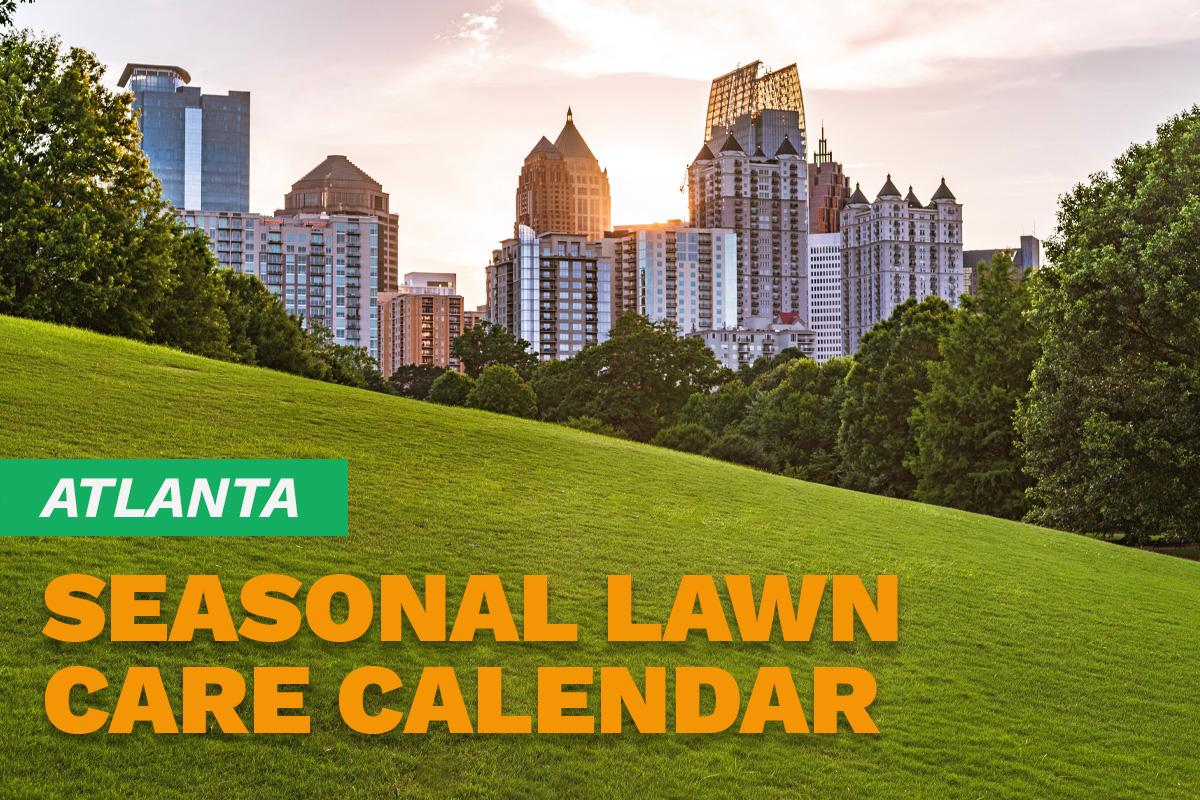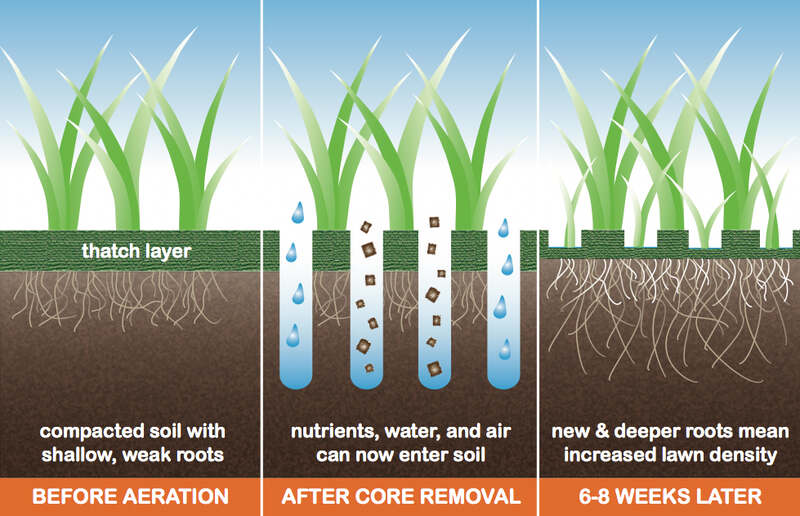
Keeping turfgrass healthy and green is a year-round job in Atlanta’s four-season climate. Read our seasonal lawn maintenance calendar for Atlanta to pinpoint the essential lawn care tasks for spring, summer, fall, and winter.

Spring Lawn Care in Atlanta (March, April, May)

Here in Atlanta, I usually start mowing my lawn in April, but there’s much work to be done beforehand to prepare the grass for the warm growing season.
To get you started, you’ll want to prepare your lawn care tools to ensure everything is in good working order. Next, you’ll want to prepare your lawn by removing debris, aerating and dethatching your grass, and possibly even scalping the lawn. Once the grass starts growing, it’s time to mow.
Spring also is the time to give your lawn a boost, which means applying fertilizer and possibly overseeding warm-season grasses to repair bald spots. This is also the time to get the jump on weed control by applying pre-emergent herbicides or post-emergent herbicides. Another must-do for spring is to take steps to prevent lawn fungal diseases and kill off spring lawn pests.
For more in-depth information about starting a new growing season the right way, read our detailed guide to spring lawn care for Atlanta.
| Hire an Atlanta lawn care company to help get your lawn ready for spring. LawnStarter pros charge around $51 to mow a 1/4-acre lot and earn a 4.5-star rating from their customers. |
Summer Lawn Care in Atlanta (June, July, August)
Living in Atlanta, we know summer is hot. Summer rainstorms can provide some much-needed water, but keeping a lawn healthy and green can still be challenging.
Watering the lawn correctly in summer is essential for healthy grass, as is keeping your Atlanta grass type slightly higher when mowing to help it retain moisture. You also should feed your grass, and one of the best ways I’ve found to feed it is by leaving the grass clippings on the lawn every time you mow.
You can also spread a fertilizer, organic or synthetic, but test your soil first and ensure it needs extra nutrients. Otherwise, you could burn the grass more than the summer sun already has.
Throughout the summer, keep a watchful eye out for weeds, harmful pests, and lawn diseases, and treat each as needed. Find more information about maintaining a healthy lawn during the hottest season of the year in our summer lawn care guide for Atlanta.
Fall Lawn Care in Atlanta (September, October, November)

Come September, lawn care changes gears and leaves start falling with the dropping temperatures. To make sure you prepare the grass properly for winter, start with leaf removal.
Next, check your soil’s pH level. If it’s between 5.5 and 6.5, you’re good. If it’s not, you’ll need to add soil amendments to adjust the pH. While Atlanta’s warm-season grasses are headed into dormancy, this is the time to fertilize and overseed tall fescue lawns.
To protect warm-season grasses, apply a pre-emergent herbicide to ward off weeds and a preventive fungicide to keep lawn diseases at bay. This is also a good time for the season’s last mow of warm-season grasses. For me, that typically occurs between mid-September and early October if warm weather hangs around a little longer.
Read more about keeping the grass healthy during autumn in our in-depth fall lawn care guide for Atlanta.
| Give your rake (and your back) a break this fall by hiring a local LawnStarter leaf removal pro. Our pros charge an average of $158 for leaf removal and have earned a 4.3-star rating from our customers. |
Winter Lawn Care in Atlanta (December, January, February)
During winter, your lawn will continue to need attention, although less so than the rest of the year. Primary tasks include avoiding damage to the grass, taking care not to overwater it, and removing debris such as leaves and limbs. While my yard doesn’t collect many leaves during winter, I do periodically have to pick up limbs following a windy day.
For those with tall fescue, you may still need to mow, but not often. Weeds and lawn diseases still present a threat, so check for those and treat if needed. Find out more about keeping your lawn healthy in the cold season from our guide on winter lawn care for Atlanta.
FAQ About Lawn Care in Atlanta
The best time to fertilize your lawn is when the grass is actively growing. In Atlanta, this means:
Mid-April to mid-May for warm-season grasses like Bermuda and Zoysia
September for tall fescue and other cool-season grasses
Your grass type determines the best time to overseed your lawn. Overseed warm-season grasses in late spring to early summer and cool-season grasses in the fall.
Aerate once a year before fertilizing, at the start of a growing season, and more if you deal with soil compaction during the year.
Enjoy a Healthy, Lush Atlanta Lawn All Year Round

Lush, dense, thick turfgrass is the result of careful work done month by month. Each season adds strength or vulnerabilities, depending on weather, soil, water, nutrients, mowing, and other factors.
There’s a lot you can do yourself for beautiful grass, but for some lawn problems, you need professional help. Contact an experienced Metro Atlanta LawnStarter professional for a healthy lawn throughout the year.
Main Image: Piedmont Park in Atlanta, GA. Photo Credit: JJason / Adobe Stock